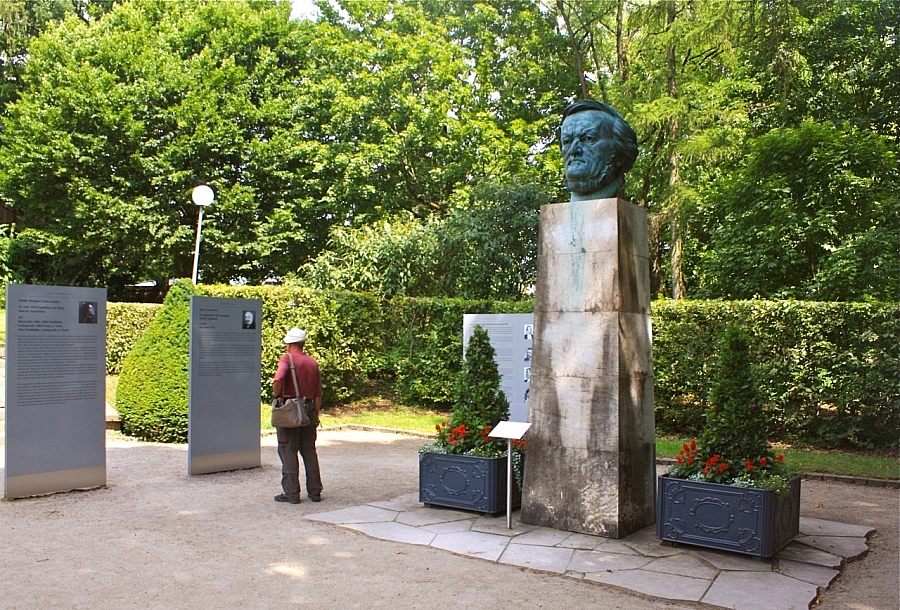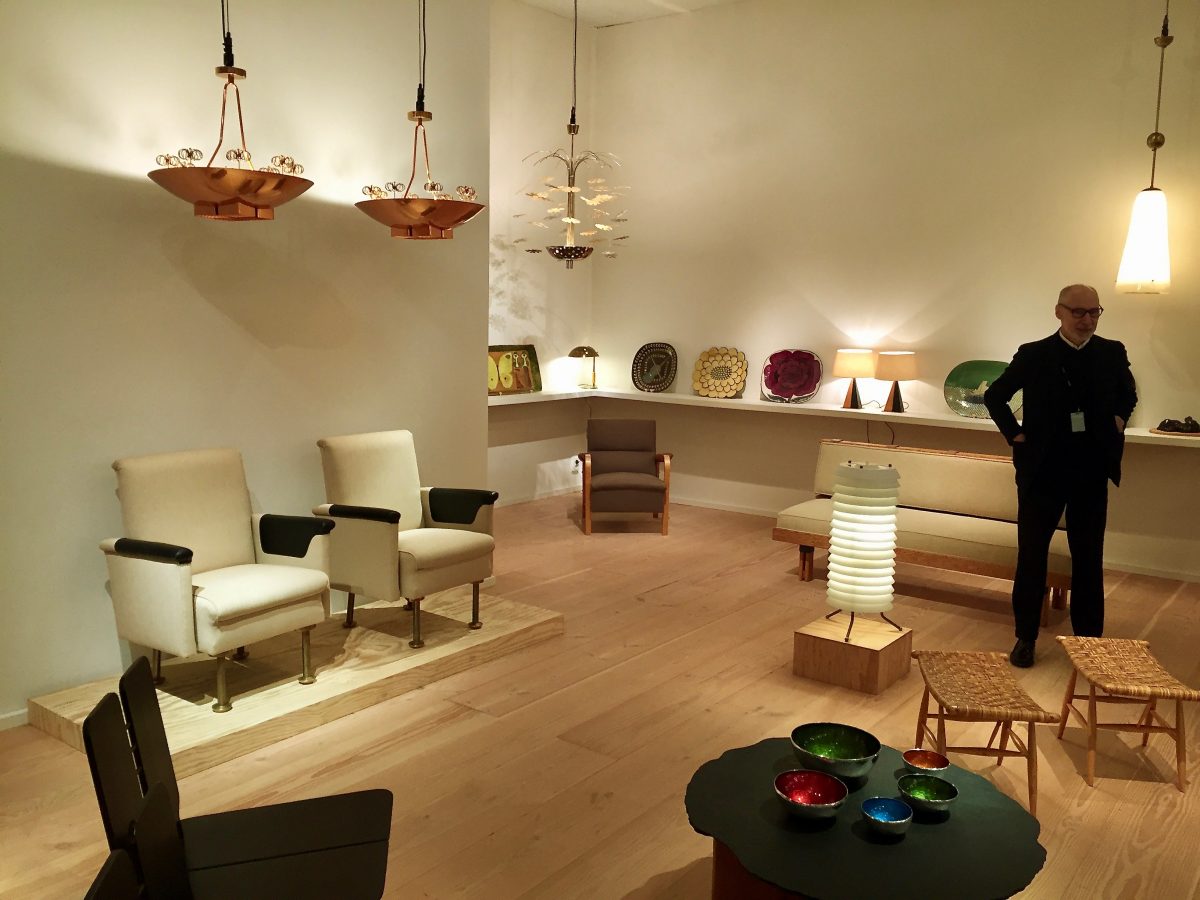
The 104th edition of the Bayreuth Festival has just kicked off with Christian Thielemann conducting Tristan und Isolde. Thielemann was recently appointed as the very first music director of the Bayreuther Festspiele. The opening night saw the usual procession of German celebrities, high nobility and politicians making their way up the Green Hill towards the literally crumbling Festspielhaus (the theatre is being renovated). A Bayreuth festival opening wouldn’t be complete without the presence of the self-confessed Wagnerian, Angela Merkel, who was accompanied by her husband. I wasn’t there for the premiere (the invite was still in the post), but rumour has it that the German Chancellor slipped off her chair in the restaurant during the first interval of Tristan. Was this a subtle way of commenting on the production or had some Greek waiter perchance sabotaged her chair?
Instead of a review of Richard’s great-granddaughter Katharina Wagner’s new production of Tristan (which in general was received very well), I can tell you about the new Wagner museum complex that opened in time for the festival. The three-pronged museum approach to Wagner consists of the revamped Villa Wahnfried, the ground floor of Siegfried Haus and a completely new concrete-and-glass construction that has sprung up in the garden of the Wagner property. This brand new museum more than doubles the previous exhibition space.
Villa Wahnfried was largely destroyed during the war and much was lost. Siegfried’s son Wieland , who tried his best to give the Bayreuther Festspiele a good reputation, simply moved into the ruins of the building. It wasn’t until 1976 that Wahnfried was reconstructed, but no attempt was made to fully restore the bourgeois interiors.
After a major rethink and three years of restoration, a new concept for Villa Wahnfried has emerged.
Some people, who remember the ‘old’ Wahnfried, will complain about the fact that many objects have been removed. The interiors now give the impression that Richard and Cosima have left the building for an extended sojourn in Venice and draped white dust covers (similar to those found in IKEA!) over most of the furniture and pictures on the wall. A few choice objects (see photograph below) and pieces of furniture remain on display.

The objects that you can actually see, explains Sven Friedrich, the director of the three Wagner museums, are the only ones that are original. The new thinking is ‘no more fakes’. The covered furniture and pictures represent all the objects that were lost in the war. Friedrich tells me that by studying old photographs they could establish how the interiors of the rooms on the lower floor appeared when Richard and Cosima were residing here. To me it looks more like a conceptual art exhibition and a momentary solution, until the ‘real’ furniture is delivered.
On the other hand I do like the fact that in some of the rooms the previously white walls have partly been replaced by an impression of what the original wallpaper must have looked like. So, while some objects have been covered by white cloth at the same time colour has been added to the walls of some rooms. Downstairs there are few texts but the whole upper floor of Haus Wahnfried is now completely devoted to the composer’s career, family life and his works.
THE SIEGFRIED WAGNER HAUS
The good news is that there has been a complete rethink about how to present not only the composer and his wife Cosima, but also their descendants and their relationship with Adolf Hitler in the 1920s, the 1930s, during the war and up until the death of Winifred Wagner in 1980. It was high time that the family’s enthusiastic support for Hitler was confronted head on. The self-exonerating and insensitive claims that Wagner was misused by the Nazis doesn’t wash any longer, even if you can’t blame the composer for the concentration camps.
The Siegfried Haus now gives you an idea of Richard’s abhorrent anti-semitic writings and how ‘the master race’ used Wagner’s ideology for their own purposes. It never ceases to surprise me to hear how easily the Nazis (with the help of Cosima and her son-in-law Houston Stewart Chamberlain) turned Wagner’s music, his concept of a total work of art (Gesamtkunstwerk), as well as his anti-semitic ideology into effective tools for totalitarianism. The texts, photos and films are displayed on block monitors and each room on the lower floor “talks to you”.
Sven Friedrich took me on a personal tour and explained why it was decided that Siegfried Haus should be opened to the general public. “The former exhibition (only) dealt with Wagner’s works and life and the history of the Bayreuth festival. In the concept of the new museum it was very important to also deal with the very complicated history of Wagner’s effects and the connections between his aesthetics and artificial ideology with the folkish (Völkisch) movement and the history of the Third Reich.”
It is well known that Hitler was a passionate Wagnerian and he made his first pilgrimage to Bayreuth in October 1923. Hitler’s racist ideas were strongly influenced by the English-born author Houston Stewart Chamberlain who was a great admirer of Wagner’s music and was married to the composer’s stepdaughter Eva.
Hitler landed in jail after the failed Munich beer-hall putsch but the composer’s son Siegfried and the rest of the family decided to openly show their support for him when, for the first time since the war, the Bayreuth festival reopened in 1924. Hitler had already become a close friend of Winifred (Siegfried’s wife) and in an infamous interview filmed in 1976 she made no attempt to dissociate herself from “Wolf” (as the family called him) and continued to express her admiration for him long after the second world war. Siegfried Haus remained unscathed during the war despite being located next to Wahnfried. Winifred occupied the house until her death in 1980.
“Hitler lived here during his Bayreuth stays between 1936-1940 and it is absolutely impossible to deny this part of the history”, says Friedrich.
The dining room looks exactly as dark and joyless as it would have in the 1930’s and nothing has been added or replaced. It feels quite eerie when you realise that the Führer sat here and chatted (perhaps even flirted) with Winifred and the rest of the Bayreuth circle over a vegetarian meal. There are not many places in Germany where you can see such an authentic 1930s interior that can be linked closely with Hitler. One can only hope that Siegfried House doesn’t attract the kind of people who secretly worship Hitler.
Sven Friedrich’s predecessor already organised an exhibition about Wagner and the Jews in the 1980s and there have been conferences on the same theme, but this is the first permanent and extensive display about this subject matter at the Wagner property.

Two years ago the very moving Verstummte Stimmen ( Silent voices) exhibition was installed in the park beneath the Festspielhaus. Panels show pictures of singers, conductors and musicians (mainly) from a Jewish background that performed at the Bayreuther Festspiele. A short biography explains when and in what role(s) they appeared in Bayreuth. The fact that many of these performers had been very successful at Bayreuth made no difference. If they were Jewish, they were at some point not rehired.
Long before the Nazi era Cosima Wagner took exception to some Jewish singers and three years after her death (in 1930) a production of Die Meistersinger von Nürnberg became the first Jew-free production in Germany. Many Jewish musicians and people married to Jews went into exile during the 1930s, but unfortunately most of them stayed in Germany and ended up in concentration camps.
The large bust of Richard Wagner in the park is nowadays permanently surrounded by Jewish musicians who once performed the Master’s works at the Festspielhaus. But instead of being covered in glory, they are now mostly remembered for having perished in concentration camps.


